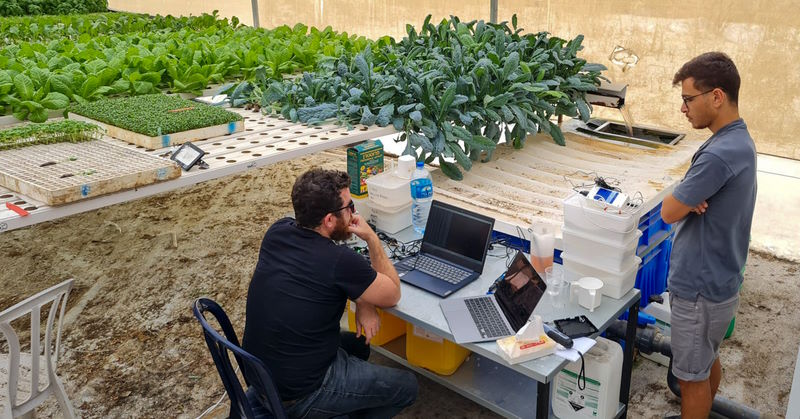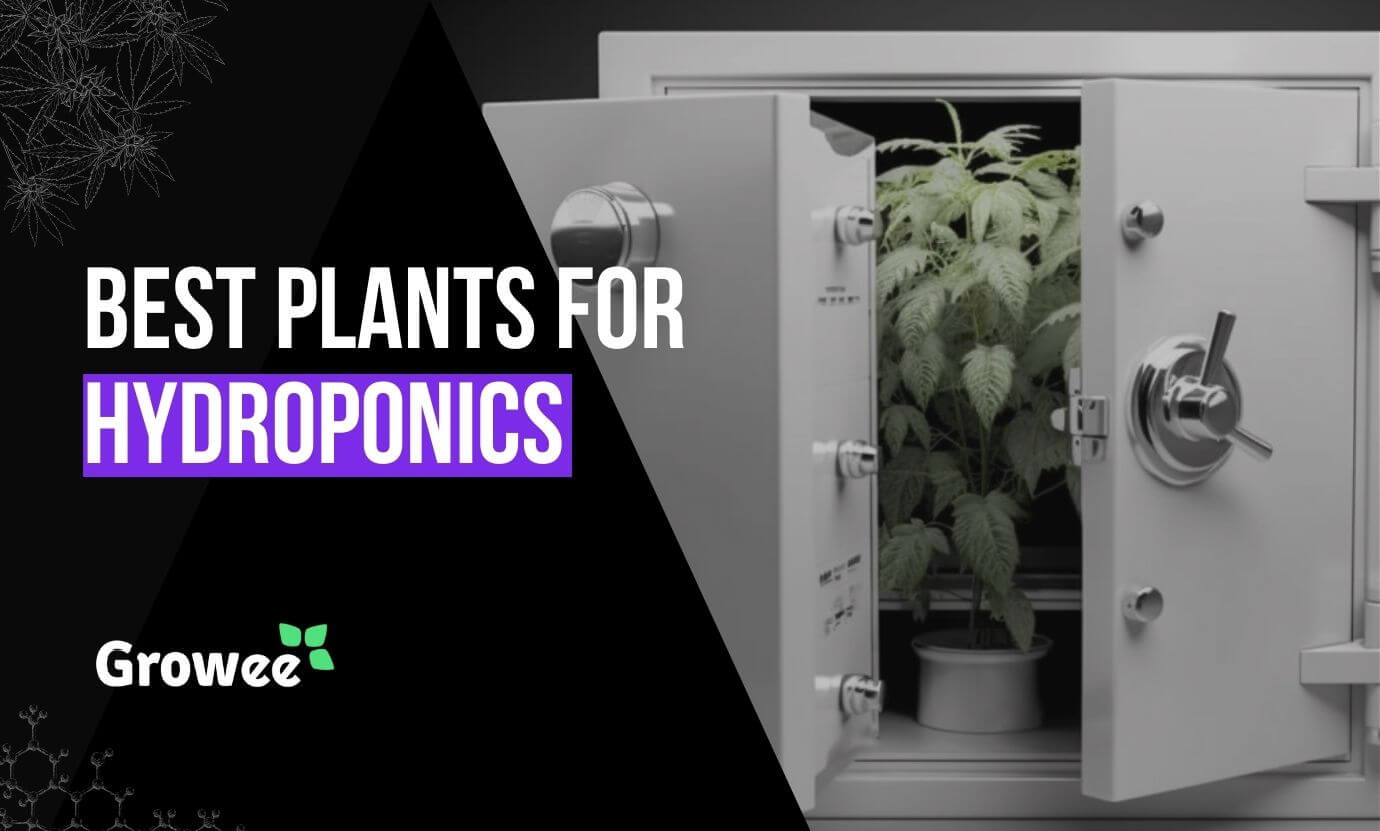Hydroponic farming has gained popularity in recent years as an innovative and sustainable method for growing a variety of crops. Many people are curious about the costs associated with hydroponic farming and whether it’s a cost-effective choice compared to traditional soil-based farming. In this article, we’ll dive into a comprehensive cost analysis of hydroponic farming, including initial investments, ongoing expenses, labor costs, and cost-saving strategies.
See How Growee Can Save You Time By Automating Your Plants Feeding
Water pH – Automated pH Up and Down Control
Nutrients Mixing – Automated Nutrient Dosing with Target EC / PPM Control.
Control From Anywhere – WiFi Connection and mobile App
Understanding Hydroponic System Costs
1. Initial Investment
- System type and complexity: The cost of a hydroponic system can vary significantly depending on its type and complexity. Systems such as nutrient film technique (NFT) and aeroponics tend to be more expensive due to the need for specialized equipment, while simpler systems like hydroponic floating raft systems are more affordable.
- Size of operation: The scale of your hydroponic farm will also impact the initial investment required. Larger operations will require more equipment, materials, and space, leading to higher costs.
- Grow lights: In indoor hydroponic farming, where growers aim for year-round production, artificial lighting is essential for plant growth. High-quality LED grows lights, though initially expensive, provide energy efficiency and long lifespans, ultimately saving money over time.
2. Ongoing Expenses
- Water and electricity: Hydroponic farming relies on water and electricity to maintain optimal growing conditions. While water usage is typically lower than in soil-based farming, electricity costs can be higher due to the need for grow lights, pumps, and other equipment.
- Growing medium: Unlike traditional soil-based farming, in semi-hydroponic systems growers use alternative growing mediums such as coco coir, perlite, or rockwool. The cost of these materials can vary, and some may be more expensive than traditional soil.
- Nutrient solutions: Hydroponic plants require specialized nutrient solutions to thrive. The cost of these solutions can vary, but they’re typically more expensive than traditional fertilizers used in soil-based farming.
- Labor: Hydroponic farming often requires skilled labor to monitor and balance the chemistry of the water, manage the system, and tend to the plants. This labor cost can be a significant ongoing expense for hydroponic farms.
- System maintenance: Regular maintenance is crucial to keep a hydroponic system functioning properly. This includes sterilizing the water and system before each growing cycle, as well as cleaning and replacing parts as needed. These necessary maintenance tasks can add to the overall cost of hydroponic farming.

Cost Comparison: Hydroponic Farming vs. Traditional Soil-Based Farming
When comparing hydroponic and traditional soil-based farming, it’s important to consider factors such as land, water, energy, crop yields, and potential savings.
- Land: Hydroponic systems can be set up in smaller spaces, reducing land costs. Moreover, when using vertical hydroponics systems, even more space can be saved compared to traditional soil-based farming. This efficient use of space, particularly through vertical orientation, further minimizes land requirements and costs.
- Water: Hydroponic farming generally uses less water than traditional farming, as water can be recirculated within the system. This can lead to significant water savings over time.
- Energy: While hydroponic systems can have higher electricity costs, the use of energy-efficient equipment like LED grow lights and solar power can help mitigate these costs.
- Crop yields: Hydroponic systems can produce higher crop yields compared to traditional farming due to the controlled environment and efficient nutrient delivery. This can lead to more revenue and offset some of the higher costs associated with hydroponic farming.
Is Hydroponic Farming Cost-Effective?
The cost-effectiveness of hydroponic gardening can vary depending on the specific system, crops grown, and individual farm management. In somcases, the higher crop yields and potential savings in water and land costs can offset the initial investment and ongoing expenses, making hydroponic farming a cost-effective choice. Additionally, hydroponic systems can extend the growing season and enable year-round production, further increasing revenue potential.
Embracing hydroponics feeding automation with Growee to Cut Costs
Growee offers a suite of smart hydroponic automation products designed to optimize the management of your hydroponic farm. Their solutions include advanced sensors, IoT devices, and user-friendly software that monitor essential parameters such as pH, nutrient levels, temperature, and humidity. These tools provide real-time data and customizable alerts, enabling growers to make informed decisions and adjustments on the go. By integrating Growee’s products into your hydroponic system, you can enhance your farm management, improve crop health, and maximize yield while reducing labor costs and human error. Overall, Growee’s innovative products are valuable investments that can elevate your hydroponic farming operation to new levels of efficiency and productivity.
More Cost-Saving Strategies
- Pick the right system for your needs: Choose a hydroponic system that aligns with your budget, space, and crop requirements to maximize efficiency and cost-effectiveness.
- Optimize grow light usage: Use energy-efficient LED grow lights and optimize their usage to reduce electricity costs.
- Recycle water and nutrients: Implement a recirculating system to conserve water and nutrients, reducing overall consumption and costs.
- Use energy-efficient equipment: Invest in energy-efficient pumps, fans, and other equipment to minimize electricity costs.
- Implement integrated pest management: Utilize cost-effective pest management strategies to protect your crops and reduce potential losses.
Conclusion
Hydroponic farming, though sometimes perceived as expensive, offers several advantages over traditional soil-based farming, including higher crop yields, efficient water and land use, and the ability to grow year-round in controlled environments. By understanding the various costs associated with hydroponic farming and implementing cost-saving strategies such as energy-efficient equipment, recycling water and nutrients, and embracing automation with solutions like Growee, it’s possible to create a cost-effective and sustainable farming operation. Ultimately, the decision to invest in hydroponic farming should be based on a careful analysis of your individual goals, resources, and market opportunities. With the right approach and strategic investments, hydroponic farming can pave the way for a successful and eco-friendly agricultural future.
FAQ
Is hydroponic farming more expensive than traditional farming methods?
While hydroponic systems have higher upfront costs, they can be more cost-effective long-term due to increased yields and efficient resource use.
What are the initial costs of setting up a hydroponic farming operation?
The initial costs can vary depending on factors such as the size of the operation, the type of crops grown, and the equipment needed.
What are the ongoing costs of running a hydroponic farm?
Ongoing costs can include electricity, water, and nutrient expenses, as well as labor costs associated with system maintenance and crop management.
How long does it take to recoup the initial investment in a hydroponic farm?
The length of time it takes to recoup the initial investment can vary, but hydroponic farming has the potential for a quicker return on investment than traditional farming methods
Are there any ways to reduce the costs of hydroponic farming?
Implementing cost-saving strategies such as using energy-efficient equipment, recycling water and nutrients, and embracing automation can help reduce the costs of hydroponic farming.
Is hydroponic farming profitable?
Yes, hydroponic farming can be profitable when managed correctly, but profitability can vary depending on several factors such as crop selection, market demand, and operational costs.
What is Growee and how can it benefit hydroponic farming?
Growee is a hydroponic automation system that utilizes sensors, IoT devices, and user-friendly software to monitor and adjust water chemistry. It reduces labor costs and human error, while optimizing crop health and yield. Growee can be a valuable investment for hydroponic farmers looking to streamline their operations and increase efficiency



